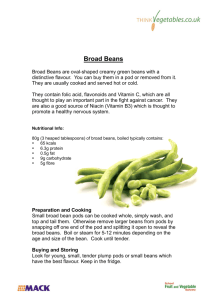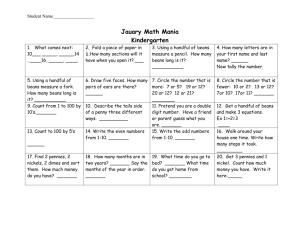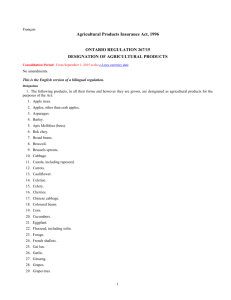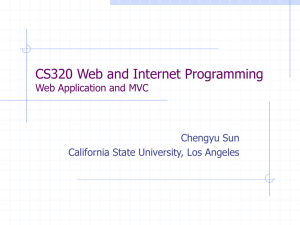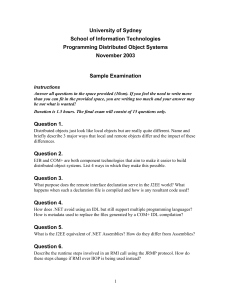An Internet Accounting System Kenji Ohmori
advertisement
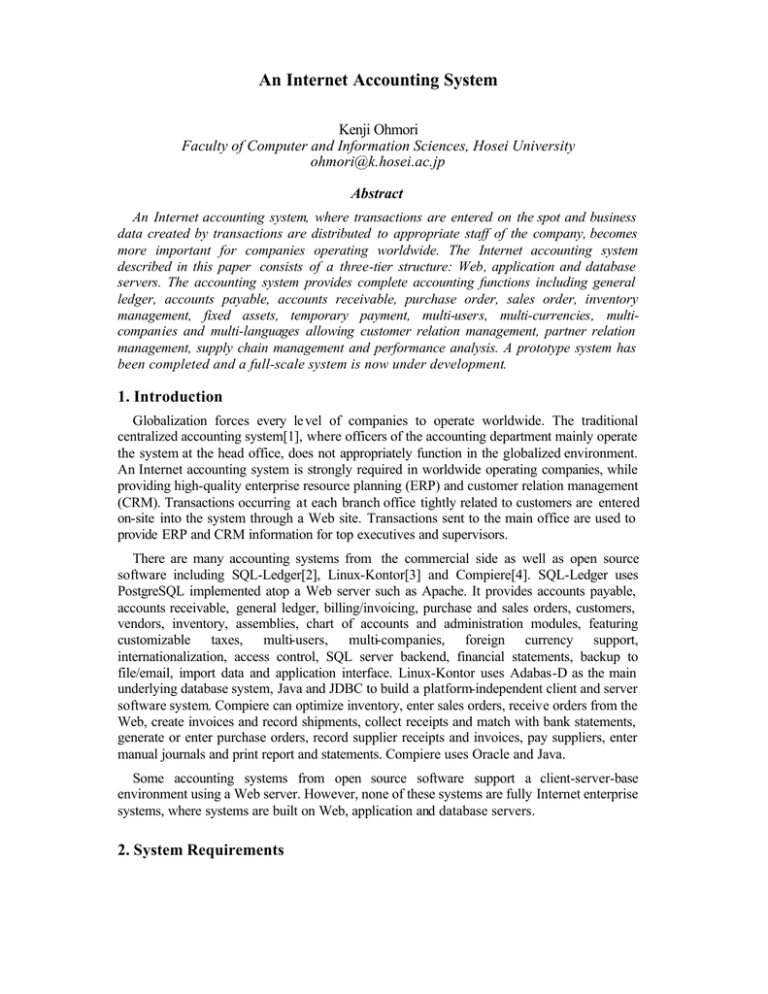
An Internet Accounting System
Kenji Ohmori
Faculty of Computer and Information Sciences, Hosei University
ohmori@k.hosei.ac.jp
Abstract
An Internet accounting system, where transactions are entered on the spot and business
data created by transactions are distributed to appropriate staff of the company, becomes
more important for companies operating worldwide. The Internet accounting system
described in this paper consists of a three-tier structure: Web, application and database
servers. The accounting system provides complete accounting functions including general
ledger, accounts payable, accounts receivable, purchase order, sales order, inventory
management, fixed assets, temporary payment, multi-users, multi-currencies, multicompanies and multi-languages allowing customer relation management, partner relation
management, supply chain management and performance analysis. A prototype system has
been completed and a full-scale system is now under development.
1. Introduction
Globalization forces every le vel of companies to operate worldwide. The traditional
centralized accounting system[1], where officers of the accounting department mainly operate
the system at the head office, does not appropriately function in the globalized environment.
An Internet accounting system is strongly required in worldwide operating companies, while
providing high-quality enterprise resource planning (ERP) and customer relation management
(CRM). Transactions occurring at each branch office tightly related to customers are entered
on-site into the system through a Web site. Transactions sent to the main office are used to
provide ERP and CRM information for top executives and supervisors.
There are many accounting systems from the commercial side as well as open source
software including SQL-Ledger[2], Linux-Kontor[3] and Compiere[4]. SQL-Ledger uses
PostgreSQL implemented atop a Web server such as Apache. It provides accounts payable,
accounts receivable, general ledger, billing/invoicing, purchase and sales orders, customers,
vendors, inventory, assemblies, chart of accounts and administration modules, featuring
customizable taxes, multi-users, multi-companies, foreign currency support,
internationalization, access control, SQL server backend, financial statements, backup to
file/email, import data and application interface. Linux-Kontor uses Adabas-D as the main
underlying database system, Java and JDBC to build a platform-independent client and server
software system. Compiere can optimize inventory, enter sales orders, receive orders from the
Web, create invoices and record shipments, collect receipts and match with bank statements,
generate or enter purchase orders, record supplier receipts and invoices, pay suppliers, enter
manual journals and print report and statements. Compiere uses Oracle and Java.
Some accounting systems from open source software support a client-server-base
environment using a Web server. However, none of these systems are fully Internet enterprise
systems, where systems are built on Web, application and database servers.
2. System Requirements
The Internet accounting system is required to give Web, application and database
services with a persistent and robust environment. The Internet accounting system is
also required to provide complete accounting functions including general ledger,
accounts payable, accounts receivable, purchase order, sales order, inventory
management, fixed assets, temporary payment, multi-users, multi-currenc ies, multicompanies and multi-languages allowing customer relation management, partner
relation management, supply chain management and performance analysis.
The Web service should provide interactive communication between end-users and
the Internet accounting system. The Web service has to be equipped at each branch
office, factory and subsidiary. A local database service should be equipped with the
Web service to keep locally required sales, purchase and employer data and local
accounting information. End users receiving the Web service are expected to be all the
levels of employees of the company, who may not have accounting knowledge.
Furthermore, it has to provide various levels of securities including user authentication,
recognition and validation.
The application service has to be persistent so that transactions are secured between
users and the main database system. Any failures during transactions caused by illegal
operations, process interruptions, power failures and illegal data formats, have to be
completely recovered. The database service is required to handle a la rge amount of data
without causing troubles for end users.
3. System Design
The interactive accounting system Web Server
depicted in Figure 1 has been Branch Office
designed using a three tier-structure,
Web Server
consisting of Web, application and
Database
database servers to fulfill the above Web Server
Server
requirements completely. This three- Branch Office
tier system allocates model, view
Application
and controller components to the
Server
Main Office
Web and application servers. This Web Server
division is a crucial issue from the Branch Office
viewpoint
of
designing
a
complicated interactive system. In
Figure 1. An Internet Accounting System
this system, Tomcat[5] serves as the
Web servers, so does JBOSS[6] as the application server and PostgreSQL[7] as the database
server. Web application programs have been designed with Struts providing flexible design
and implementation of complicated state transition of home pages.
Enterprise Java beans (EJB[8]), serving as a model component and running on JBOSS,
provide persistent functions for the system.
4. Implementation
4.1. User Interfaces
A Web server provides home pages serving as user interfaces between users and the
accounting system. Home page programs are divided into several subgroups, each of
which serves as an independent function of the accounting system. General ledger,
accounts receivable, accounts payable and temporary payments are examples.
Information for accounts receivable is entered into the accounting system directly by
staff of sales departments, so are accounts payable transactions handled by staff of
purchase departments. Other transactions are also directly input not by staff of an
accounting department but by members of on-site department.
As end users of this accounting system are non-experts, home pages provide userfriendly interfaces where the user can access to the accounting system not by technical
accounting terms but by his/her ordinary words . This requirement leads to prepare many
home pages. For example, the temporary accounting system where staff pays in advance
and is reimbursed later needs 31 home pages. In such a system, the state transition of
home pages is very complicated. After completing implementation, the order of home
pages may be changed because of necessity to implement more user-friendly interfaces.
Flexibility is the most important issue when designing home page programs. Typically,
three functions consisting of view, controller and model have to be separated as
described before. View and controller functions are provided by home page programs.
The home page programs of this system are implemented by three different types of
programs: Java Server Pages (JSP), action beans and action form beans. A JSP program
provides a view function, so does an action bean a controller function. An action form
bean is used to receive data from a previously executed JSP program and transfer
modified data to a next executing JSP program.
Figure 2. A State Transition Diagram of Temporary Payments.
The JSP programs have been implemented using Struts[10] giving a framework of
flexible home page state transition. As some home page functions such as accounting
code conversion and money presentation are very complicated when generating userfriendly interfaces, they cannot be implemented using JSP programs. These parts have
been implemented by Java Scripts. Internationalization and localization are also
important functions. Every JSP program is equipped in order that it supports multilanguages. A JSP program cons ists of class and tag library definition part, Java Script
part and HTML body part.
The state transition for temporary payments is depicted in Figure 2. This state
transition is for the prototype system. It consists of 10 JSP programs and 11 action
beans. On the other hand, the full-scale accounting system consists of 31 JSP programs.
The action form beans are not depicted in this figure. The prototype system has five
action form beans. Some of JSP programs share the same action form beans. When the
temporary payments subsystem is
called, the initialization program is
executed at first. The program
initializes the subsystem and reads
property files to prepare for
internationalization and localization.
Then, the first home page is
displayed on the user screen. Figure
3 shows a home page of a data
input stage in case of Japanese
locale. The upper part is used to
input user information such as
applicant name and affiliation,
accounting date and summary of
this temporary payment. The lower
part is information about an
Figure 3. A User Interface.
expected expense of each item
which the applicant will buy.
4.2. Session and Entity Beans
The main part of the accounting system is provided by enterprise Java beans (EJB)
carrying out business logic. EJB are divided into two parts: session beans and entity
beans. The session beans receive information from a Web server through an action bean.
The traffic between Web and application servers depends on an accounting subsystem.
Some subsystems have heavy traffic and others are not. For heavy traffic subsystems,
session beans are tightly connected with the corresponding action beans. In this case,
data between them are transported through data access objects defined by their entity
beans.
On the other hand, light traffic subsystems transport data through XML. The current
accounting system is expected to be often upgraded in order to cope with changes of
accounting rules or technology advances. The current system has to be flexible to cope
with these changes so that XML is used.
Receiving requests from an action bean, the corresponding session bean generates
database data acceptable for its corresponding entity beans. An entity bean has access to
the database system using object-relational mapping. Relations between two tables of
the database system are also covered by object-relationa l mapping. A one-to-one
relation where each other’s entity from two tables points each other is represented by an
Object-to-Object relation, and so is a one-to-multiple relation where an entity of one
table points one entity of the other table and the entity of the other table does several
entities represented by an Object-to-Collection relation of entity beans.
There are two types of entity beans: BMP (Bean Management Persistent) and CMP
(Container Management Persistent). In the accounting system, all the entity beans are
implemented by CMP. Therefore, finder methods are used to retrieve the database
system. The following program is an example of an entity bean described by
Xdoclet[11]. Xdoclet can generate all the pieces of entity programs. The beginning of
the program defines jndi-name used to call this program from other programs in a
distributed environment. Then, the database table generated from this program is
defined. The table name is Header. The class defined by this program is also depicted.
This class inherits EntityBean Class. Header table is related to Journal table with a oneto-multiple relation defining getJournals and setJournals methods. Then, methods
corresponding to the entries of this table follow. Lastly, EJB methods are defined.
/**
* @author Kenji Ohmori (ohmori@computer.org)
* @version $Revision: 1.0 $
* @ejb:bean name="Header"
*
display-name="Header Entity Bean" type="CMP" primkey-field="id" view-type="local"
*
jndi-name="accounting/header" local-jndi-name="accounting/headerLocal"
* @ejb:pk class="java.lang.Long" generate="false"
* @ejb:transaction type="Required"
* @ejb:data-object setdata="true" extends="org.gaia.transaction.interfaces.TransactionDTO"
* @ejb:finder signature="java.util.Collection findAll()" query="SELECT OBJECT(o) from Header AS o"
* @jboss:table-name table-name="header"
**/
public abstract class HeaderBean implements EntityBean {
private EntityContext ctx;
/**
* @ejb:interface-method
* @ejb:relation name="JournalToHeader" role-name="Header-ReferredFrom-Journal"
**/
public abstract Collection getJournals();
/** @ejb:interface-method **/
public abstract void setJournals(Collection journals);
………………………………………………………………..
/**
* @return Long
* @ejb:persistent-field
* @ejb:pk-field
* @ejb:interface-method
* @jboss:column-name name="id"
*/
public abstract Long getId();
/** @ejb:interface-method */
public abstract void setId(Long id);
/** @ejb:interface-method */
………………………………………………………………..
public Long ejbCreate(Long id) throws CreateException {
if (id == null) throw new CreateException(" id is null");
setId(id); return null;
}
public void ejbPostCreate(Long id) {
}
}
5. Conclusion
The new Internet accounting system of a three-tier structure consisting of Web, application
and database servers is described. The Web servers with high-quality user-friendly interfaces
serve as a presentation system to non-experts in the accounting system. The application server
with robust persistent functions serves as a business logic system. The accounting system
covers a complete accounting system. A prototype system has been completed and a full-scale
system is now under implementation. It consists of eight subsystems. Each subsystem has 30
JSP programs for the Web service and 250 beans for the application service on average.
6. References
[1] Marshall B. Romney, Paul John Steinbart, “Accounting Information Systems”, Prentice Hall; June 2002
[2] P.G. Sarang, Christopher Browne, Dietrich Ayala, Vivek Chopra “Professional Open Source Web Services” ,
Wrox Press Inc, July 2002
[3] http://www.linux-kontor
[4] http://www.compiere.org
[5] Chanoch Wiggers, et, “Professional Apache Tomcat”, Wrox Press Inc, September 2002
[6] Meeraj Moidoo Kunnumpurath, “JBoss 3.0 Deployment and Administration Handbook”, Wrox Press Inc,
December 2002
[7] Korry Douglas, Susan Douglas, “PostgreSQL”, New Riders Publishing, February 2003
[8] Floyd Marinescu, “EJB Design Patterns: Advanced Patterns, Processes, and Idioms”, John Wiley & Sons,
February 2002
[9] Simon Brown, et, “Professional JSP 2nd Edition”, Wrox Press Inc, April 2001
[10] Ted Husted, Cedric Dumoulin, George Franciscus, David Winterfeldt, Craig R. McClanahan, “Struts in
Action: Building Web Applications with the Leading Java Framework”, Manning Publications Company,
November 2002
[11] Damon Payne, Ed Lyons, “Professional Java Tools: Real world Ant, JUnit, CVS, Cactus, Buzilla, Maven,
JMeter and XDoclet”, Wrox Press Inc, April 2003
